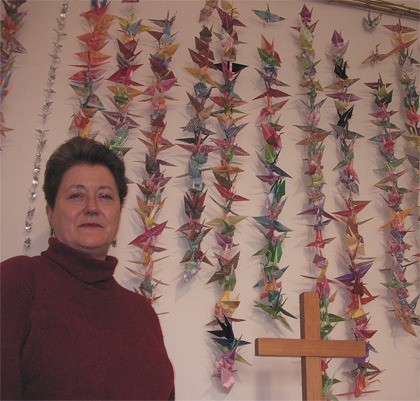After stepping into a Methodist church in Des Moines, Wash., Sue Terbruggen’s eye was drawn by the flocks of folded paper cranes hanging inside.
The display stopped Terbruggen, a Fall City Methodist Church lay leader, in her tracks. She had been looking for a way to make her own church’s entrance more welcoming, and knew then and there that she wanted that same look in Fall City.
A symbol for peace, the cranes originated some 60 years ago in the aftermath of World War II.
Tradition says that a young girl, Sadako Sasaki, was diagnosed with leukemia due to radiation exposure from the atomic bombs dropped on Hiroshima and Nagasaki. Told that if she were to fold a thousand cranes, she would be able to make a wish and it would come true, Sasaki made her wish to be well within a world of peace. Sasaki died, but her strength and passion have been a symbol for peace for decades.
Inviting Fall City Methodist Church members to fold paper cranes, the congregation is now dedicating the cranes to peace and honoring the memory of Isoka Koba, a longtime church member.
“We have over 1,000 here, I imagine,” Tebruggen said. “We’ll have these up, probably, until I’m gone.”
Years ago, Koba folded a number of paper cranes, which the church hung up in their sanctuary. Koba died in 2006.
In her memory, a dedication of the newly hung paper cranes was held Sunday, March 21.


